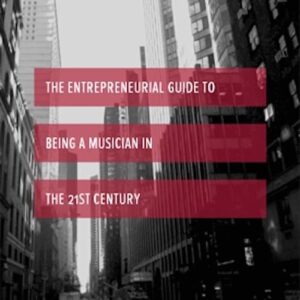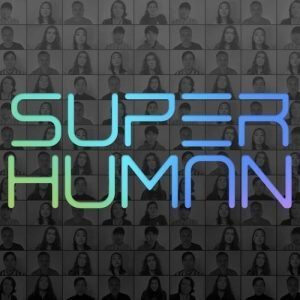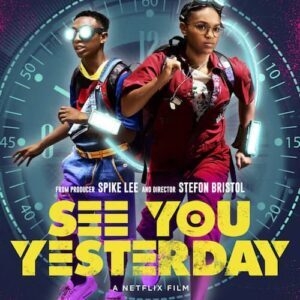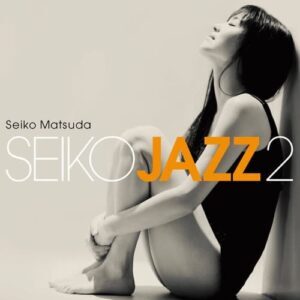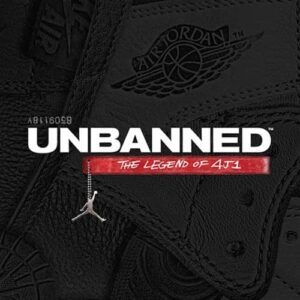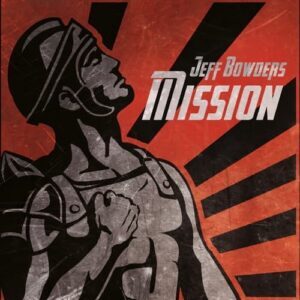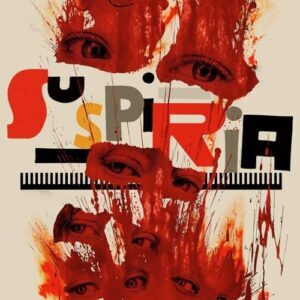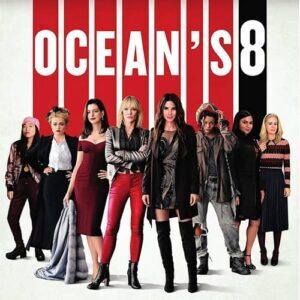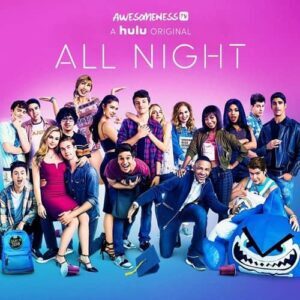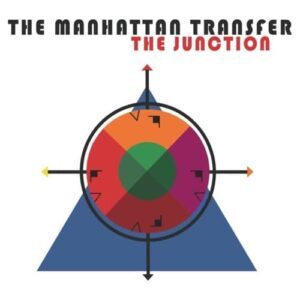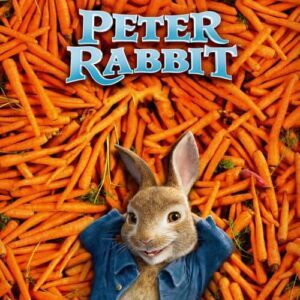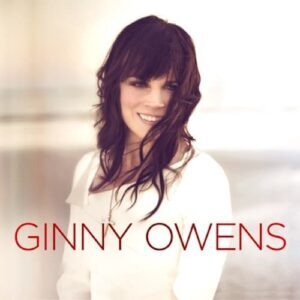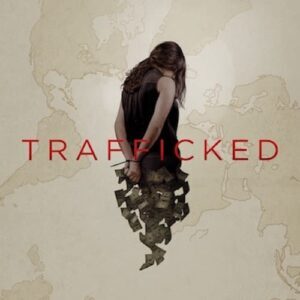In so many ways, the music business has been turned on its head over the past couple of decades through the progression and miniaturization of technology as well as the distribution methods that the public uses to get and enjoy music. I avidly follow numerous music and music business sites, blogs, and studies, watching to see what new ideas are coming up to help new musicians get established and build a career in the wild west that is now the music business. One in a million will go viral, but for everyone else, a combination of hard work, perseverance, and relentless pursuit of quality will yield results…if you’ve got something unique to say.
This guide is a compilation of numerous resources I’ve found across the internet that I think may be helpful to independent artists and musicians looking to get ideas on furthering their careers and finding wider distribution and success for their music.
DISTRIBUTION
First, get your music to all the major digital stores (most importantly, iTunes and Amazon, but there are dozens of others) by using services like Tunecore, Reverbnation, Indaba, BFM Digital, ONErpm, or CDBaby. They typically cost somewhere in the neighborhood of $10/single and $40-50/album in setup fees, and then take varying amounts of percentages off your earnings. Here’s a comparison of some of the services, and another comparison.
Physical distribution (i.e. the pressing of actual CD’s) may or may not be important, depending on your situation. Studies show that only 20-30% of the American music-buying public is comfortable with digital downloads, but that number is certain to increase dramatically over the coming years. (Click here for a graphic look at the changing trends of how people buy music.) Yet pressing physical discs adds substantial up-front cost as well as stocking and shipping headaches. For a very painless yet high-quality way to offer physical CD’s, pressed on demand with no physical inventory, I’ve been really impressed with CreateSpace, which will allow you to list a physical CD on Amazon.com with no startup or ongoing costs (in other words, it is virtually free to set up, although they take a substantial percentage of earnings). Other services, including the links mentioned in the paragraph above, offer the same capability with slightly different parameters.
If you want to press physical CD’s the traditional way (pay up front for a batch of hundreds or thousands, which is very cost-effective if you are sure you can sell a good portion of them), two of the most popular services are DiscMakers and Oasis. If you’re pressing up physical CD’s, I highly recommend you read this article on copyright and other legal matters. It includes detailed information about a lot of things you might not realize should be included somewhere in the packaging.
An interesting alternative to physical distribution is a hybrid solution like DiscRevolt, Dropcards, or FizzKicks that make it easy to sell digital music at live gigs via download cards.
Additionally, selling direct on your own web site (perhaps taking payments via PayPal), shouldn’t be neglected; you can keep the highest percentage of the profits by selling direct. Here’s a comparison of several services that do this. Another company that makes it very easy to do this is VibeDeck.
Philosophically, the concept of an “album” has changed a lot in the past few years. Here’s an article on Bandcamp’s take on it.
Noisetrade is a very interesting way that’s finding increasing popularity as a way to discover new artists as well as build a fan base. Upload your songs/album to Noisetrade, and users can trade their e-mail address for a free download. They can also tip you. It’s a great way to increase exposure and build a bigger e-mail list (see below for more tips on that). Alternatives to NoiseTrade include Gumroad and Bandcamp.
Here’s a great article on how to turn your CD into a kick-ass marketing tool.
FUNDRAISING
Need money to fund a project? Many are finding Kickstarter to be a well-designed tool to crowdsource fundraising for a project. (Here’s additional links on How to Kick Ass on Kickstarter, Four Essential Elements to a Kickstarter Campaign, Four Rules for Crowdfunding, Lessons Learned From Three Successful Kickstarter Music Campaigns, and more tips from Entrepreneur magazine.) Also check out PledgeMusic, which is a competitor to Kickstarter and specifically geared for music projects (while Kickstarter can be used for any project seeking venture capital). Other similar sites: Indiegogo, Rockethub, Patronism, and Sellaband. Here’s an article on the 7 Best Crowdfunding Sites for Music. From the other side, here’s 6 Mistakes We Made In Our Crowdfunding Campaign. Here’s a great article on Kickstarter tips, and another.
A WEB PRESENCE
A full-blown web site can cost several hundred dollars and into the thousands. This can be appropriate for some people, but if that’s out of your reach, consider this: the most important thing is that if someone is searching for you, that they find something, and that that something contains the most important information about you: biographical information, audio clips, sound clips, videos, live dates, and anything else that is relevant. Making this information accessible is far more important than a stylish, unique, and iconic web site. In other words, content (not design) is king.
So, if getting a fully personalized web site is beyond your grasp, consider alternatives like a ReverbNation page (here is an example of one which contains all of the important information about the artist in one organized page). Other alternatives include MySpace, SoundCloud, BandCamp, Nimbit, and BandZoogle. Each of these offer a variation on web page design and hosting, sound file hosting, and offer various places to include the other relevant information. I’m particularly impressed with BandZoogle, which is one of the easiest economical ways to build a full-featured web site with all the features that you could need. Click here for some sample BandZoogle sites, and here’s an article on its features.
Numerous DIY web site services exist, including a personal favorite, flavors.me, which allows for quick, attractive design, without needing a web programming background. Tumblr is also a great resource for quick, free, yet impressive web sites. Here’s an article about how Tumblr has improved as a tool for musicians.
Whatever you choose, keep it constantly updated. A “dead” page that contains old links to old shows is the kiss of death.
Once the basic web site is solid, add to it. A press section can be invaluable to journalists who are ready to promote you. Here’s another post on how to post a perfect press kit.
LIVE PERFORMANCES
Playing live gigs remains an important way to get music heard, connect with fans, and sell merchandise. When you book a live gig, check out services like Ustream, StageIt, StreamJam, Stickam.com, or Justin.tv to broadcast a live concert over the internet. StageIt even allows you to sell tickets to the internet broadcast. Then use social networking to drive people to tune in. YouTube now allows live streaming from most accounts.
You can now Ustream straight to Facebook to engage your network of friends.
If you sell merchandise, keep an eye on new developments in mobile phone apps that can make your life a lot easier. Here’s some additional tips on merch in the Web 2.0 era.
For live bands/artists who do play regularly, here’s the next step: tips on how to get a booking agent, which ties in many other areas of entrepreneurial endeavors.
BandsInTown looks like a promising way to help spread the word about concerts through social media. Also, get registered with Local Band Network so you can can connect with local venues. Other sites worth checking out: BandSurfing, Getagig (UK-centric), Indie on the Move (US-centric), and SonicBids.
Here’s 5 tips to filling an out-of-town music club with fans.
Ready to take things up a notch? Here’s Hypebot’s How To Book Your Band On A Festival This Summer, a DIY Hip Hop Guide to Touring Europe, and a huge comprehensive list called The DIY Musician’s Complete Guide to Touring. Here’s DiscMaker’s free PDF about Touring as an Indie.
Get local music journalists involved. Here’s 3 Steps for Standing Out to Music Journalists and 10 Top Tips For Contacting Music Websites.
PROMOTIONS
Social media is absolutely essential.
Want to pimp out your Facebook profile? Facebook has a special guide to designing music pages, or check out the very popular Facebook applications DamnTheRadio, RootMusic (also known as BandPage), or ReverbNation’s Facebook app. Here’s suggestions on making the most of your Facebook page, and a guide to handling social media. Even if you’re a Facebook veteran, you need to read 8 Essential Tips for Publicists Using Facebook. Here’s another article on one easy way to sell and share music on Facebook. Whatever you’re using for a web site, tie your web site to Facebook via Like buttons to help more people hear about you. (And accordingly, feel free to take the time to “Like” this article by clicking Like at the bottom!) If you use BandCamp, you can easily embed BandCamp tracks on Facebook for streaming and purchase. Here’s Facebook’s complete guide to building a band page. Finally, here’s five ways to sell your music directly on Facebook. Reverbnation and Facebook have recently begun a new promotional tool called PROMOTE IT. If you chose CDBaby for digital distribution, they just announced MusicStore to sell your music on Facebook. If you’re using Bandcamp, you can add Bandcamp to your Facebook page. Finally, here’s an updated Definitive Guide to Facebook for Musicians.
Don’t just tweet. Strategically build a following. Here’s ten ways to get more REAL Twitter followers. If you’re a Twitter newbie, here’s everything you need to know. Coming from the other angle, here’s the top five ways to fail on Twitter.
Google Plus is still new to the scene, but here’s a Musician’s Guide to Google Plus from MusicThinkTank.
LinkedIn is one of the lesser social networks, but that doesn’t mean there aren’t valuable connections to be made; here’s a musician’s guide to LinkedIn.
Believe it or not, don’t forget Instagram. Or Tumblr.
Tell your story. Blog about it (like this Billboard writeup of the latest Quincy Jones album), make an interview or behind-the-scenes video (like this Paul Simon promotional video for his latest album or this Norah Jones promo video), and offer insider freebies (like a free download of a track from Pete Yorn’s latest album, in exchange for a tweet – you can use TweetForATrack.com for this). Get creative like Josh Freese. SoundCloud just launched E-mail Unlock to do exactly this.
Video is extremely important; did you know that YouTube accounts for around 70% of music-related searches? Here’s another article on Why Musicians Should Focus on YouTube. Once you’ve got video content, here is a very helpful article on 8 Ways to Maximize Your YouTube Marketing Results. When you post YouTube videos, be sure to include the URL of your web site (or to Twitter, Facebook, or other central locations) in the description so that people can follow up. Here’s an interesting promotional concept: stream your whole album on YouTube. Here’s an article on 11 YouTube Tips from the Pros. Here’s 4 Rules for a Video to Go Viral.
Google for the top music web sites, and you’ll come up with articles like this which will lead to a treasure trove of links of sites you may want to approach for publicity and/or to solicit a review or a mention.
I honestly can’t tell if QR codes are a fad or if they have genuine potential as a communications mechanism. Here’s three articles on how they can be used in marketing: Music Marketing with QR Codes (Hypebot) and 10 Creative Ways Musicians Can Use QR Codes (Hypebot).
iTunes Ping is a new up-and-coming social network devoted to music lovers. If you chose distribution through Tunecore, they’ll now let you set up a Ping artist page.
Check the Live Performances section above for a list of sites that allow free unlimited video streaming, and broadcast a launch party, or insider concert, or interactive interview (take Twitter questions).
Master the art of enchantment. Here’s more detail. Here’s how to use Facebook to enchant. (If you like this, google for “Guy Kawasaki Enchantment” and you’ll find his excellent book as well as dozens of articles and interviews on this topic.)
Other interesting ideas:
- Ten Low-Cost Low-Tech Promotion Ideas (thanks Bobby Owsinski @ Music 3.0)
- Josh Freese’s interesting ways to personalize the buying experience (thanks Bobby Owsinski @ Music 3.0)
- The Problem With Releasing a Single Each Month (includes additional promo ideas, thanks @MusicThinkTank)
- Generate Demand for Your Music By Rightly Using A Loss Leader (thanks @MusicThinkTank)
- Sonicbids CEO Panos Panay On Rethinking Music plus 5 Tips For Emerging Artists (thanks @hypebot)
- 5 Easy Steps To Making Your Dreams Come True (thanks @musiconthemake)
- Your Music Is Your Marketing (thanks Bobby Owsinski @ Music 3.0)
- The 29 Streams (a very well-written post detailing 29 possible revenue avenues for music makers, thanks @future_of_music)
- An Introduction to the Self-Released Album (an excellent post somewhat similar to this one, with different details filled in, thanks @MusicThinkTank)
- How Jonathan Coulton Made $500k Last Year as a DIY Musician (thanks NPR)
- 2000 Things to Generate 20,000 Fans Challenge (thanks Michael Brandvold)
- Topspin Media is a one-stop shop for marketing, merch, sales, tickets, downloads, and more.
- Headliner.fm is an interesting way to attempt to enlarge your network for free.
- Viinyl.com lets you make song-based web sites. An interesting marketing tool.
- A large list of free guides courtesy of Disc Makers.
- Ten Tips For Do-It-Yourself PR and Publicity For Bands (thanks @michaelsb)
- Five Tips For Approaching Music Journalists (thanks @MusicianCoaching)
- Touring Tip: Play In-Studio and In-Store Shows (thanks @cdbaby)
- Seven Ways to Bring Back the Physical Album Experience in Digital Music (thanks @musicthinktank)
- Using the Web to Reach 400,000 Fans (thanks @hypebot)
- Investigate internet radio opportunities (thanks KnowTheMusicBiz)
- 101 Resources for Marketing Music (thanks UnsignedBandPromotion)
- Things to Watch: Music Edition
- ReverbNation launches PROMOTE IT Facebook advertising
- 15 Indie Artist Revenue Opportunities for 2012 (thanks Hypebot)
- New Ways Musicians Can Earn Money in 2012 (thanks CDBaby)
- Self-Promotion Tips for Nice People (thanks @feelgooder)
- 100 Free & Affordable High & Low Tech Music Promotion Tips (thanks Hypebot)
- Don’t Ignore Old School Music Marketing: Creative Ideas For Press Kits, Merch & More (thanks Hypebot)
- Interesting thoughts on releasing several singles instead of an album: Unbundling the Album: A Business Case for Releasing Single Songs (thanks @MusicThinkTank)
- Six Ways to Get Publicity for Your Album (thanks @unifiedmfg)
- My Album is Finished– Now What? (thanks @CDBaby)
- Google Hangouts for Musicians (thanks @hypebot)
- Get Your Music Played on College Radio (thanks @SongTrust)
- Marketing Plan Tactics for Independent Musicians
- Ten Alternatives to Sending a Press Release (thanks @michaelsb)
BUILD A MAILING LIST
A good-sized mailing list is a great asset to a career as an artist. People are more likely to buy a product from someone they like and trust, and sending out regular mailings is an important way to communicate directly with fans. Use services like BandLetter, MailChimp, FanBridge, or ReverbNation to help build a mailing list of followers. (I strongly recommend against simply adding to a CC or BCC list in your e-mail program, which is much harder to manage and looks less professional.) This episode of The Music Biz Weekly Podcast focuses on discussing the differences between many of these services. Here’s an article on MusicThinkTank that goes into much more detail about Three Musician Marketing Basics and a WAMM article with further ideas on tips for collecting, blasting, and loving your e-mail list, an excellent MicControl article on Why No One Is Reading Your Newsletter, and a USA Today article on ten tips to getting your e-mail newsletter off the ground. Here’s ten ways to trade a song for an e-mail address. Noisetrade offers a novel way to trade a song for an e-mail address. Here’s 5 Critical Things To Add To Your Monthly Newsletter.
MARKETING TO FILM AND TV
Want to offer your music for licensing to film and TV? For the hardcore business-savvy artist, you can license music yourself by using LicenseQuote. Here’s another alternative through Songtrust. The latter offers an easy way to simply stick a badge on your web site and have Songtrust/Downtown handle the administrative paperwork.
You can also offer your music for licensing in any of the thousands of music libraries that are springing up every day. Two of the most popular are JinglePunks.com and MusicSupervisor.com, which offers an extensive cataloguing system designed to help music supervisors (the people who place music into film and TV) find the right material for their project. Other libraries that may be worth checking out: AttackTrax, BeatPick, CrucialMusic, Humtoo, and Pump Audio. But read the fine print, particularly regarding exclusivity, which specifies whether only one company, or many, will be allowed to represent and license your music for sync.
COPYRIGHT, ADMINISTRATION, BUSINESS, AND LEGAL
Some reference reading on the topic of copyright: The Emergence of The New Music Industry – It’s Global, Generates A Lot Of Money & Is Based On Six Copyrights, and How Not To Get Screwed: The Six Legal Rights That Drive The Music Business (PDF).
Need to license a cover song? Limelight is the fastest and easiest way. The other option is the Harry Fox Agency.
Here’s a very helpful Music 101: A Guide for Filmmakers, Television Producers, Music Publishers, and Songwriters, thanks to the Dinsmore legal firm.
Songtrust can help you with music publishing administration.
Register with SoundExchange so you can collect performance royalties. It’s free and painless. Here’s more detail on how it works.
If you’re going to release an album or single independently, you effectively are your own indie record label, whether you give it a formal name or not. Here’s a spreadsheet of a Quickbooks chart of accounts for indie record labels.
Here’s a quick overview of setting up a band bank account and business (LLC). Under certain circumstances, this advice can be useful for a specific collaborative project too.
Here’s a helpful article on budgeting that includes a lot of tips from the start to the finish of the entire production and marketing process.
If you’re not already a member of a PRO (in the USA, your choices are ASCAP, BMI, and SESAC), that should be on your list of things to do if your music begins to get airplay. Here’s Hypebot’s helpful comparison of the three services.
MISCELLANEOUS
New resources for publishing, promoting, and following music trends appear almost daily. Here’s a collected list of additional resources worth checking out. Some are worth subscribing to long-term:
- Bandcamp
- BandSurfing
- CyberPRurban – lots of interesting music marketing articles
- Dave Cool – a good blog by a musical entrepreneur and filmmaker
- Derek Sivers – an entrepreneur with a musical background who offers many articles on music marketing (Twitter)
- Digital Music News (Twitter)
- Headliner.fm – reach new fans who like similar music via social networking
- Know The Music Biz
- Michael Brandvold’s blog (Twitter)
- Music 3.0 (Twitter)
- Music Business Solutions – lots of useful articles
- Music on the Make (Twitter)
- MusicianCoaching.com (Twitter)
- MusicThinkTank (Twitter)
- New Music Tip Sheet (Twitter)
- Official.fm – “the do-it-yourself music club”
- Performer magazine (Twitter)
- Receptive Music – a digital marketing firm for the music industry
- We All Make Music (Twitter)
- More music business Twitter feeds to follow: @AmpMusicMkt, @GrassRootsy, @ThornyBleeder, @CBracco, @DannyDee, @Wicked_D, @HowToRunABand, @KnowTheMusicBiz, @LiveUnsigned, @MakeItInMusic, @MicControl, @MrBuzzFactor, @MusicCoaching, @MusicOnTheMake, and @ValleyArm.
GOT SOMETHING TO ADD?
This article is by no means exhaustive, but contains a brief sampling of thousands more resources like it. If you’ve found an interesting concept or service, post below in the comments or use the Contact page to send me feedback, suggestions, and so on. I can’t acknowledge every e-mail, but will update this post as new promising resources come up.

